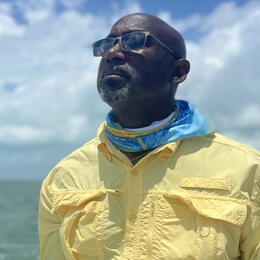Expediting Everglades restoration projects that increase freshwater flows to the Everglades and Florida Bay while reducing harmful discharges to the Caloosahatchee and St. Lucie estuaries has been a high priority for Governor DeSantis since taking office. The U.S. Army Corps of Engineers (Corps), the federal partner for the Comprehensive Everglades Restoration Plan, and the South Florida Water Management District (SFWMD), the local sponsor for restoration, moved the ball closer to the restoration goal line with three recent achievements.
The Everglades Agricultural Area Reservoir is a key component of Everglades restoration. The reservoir is anticipated to hold 240,000 acre-feet of water (equal to six inches in Lake Okeechobee) that will be used to refresh the Everglades and Florida Bay instead of being discharged to the northern estuaries and flushed out to the Atlantic Ocean and Gulf of Mexico. In order to ensure federal cost sharing for the project, the SFWMD must reserve enough water to fill the reservoir to protect fish and wildlife, including key indicator species such as the endangered Everglade Snail Kite and Roseate Spoonbill. In October, the District Governing Board adopted water reservation regulations, clearing the way for federal cost-share dollars to help finance the project and keep it moving forward to realize benefits as soon as possible.
Removing barriers to sending water south and restoring historic flow paths are also important restoration priorities. Also in October, the SFWMD and Corps marked completion of construction of the S-333N water control structure by SFWMD and the award of a $40-million contract by the Corps for construction work on the L-67A levee, both authorized as part of the Central Everglades Planning Project. The S-333N structure, when open, will double the amount of water that can be moved south from Water Conservation Area (WCA) 3A into Everglades National Park and will help alleviate high water levels in WCA 3A. Construction on the L-67A, to be completed in 2024, will remove barriers to the historic flow of water from WCA 3A to WCA 3B into Northeast Shark River Slough and Everglades National Park.
Audubon’s science and policy team worked closely with key decision-makers to support these critical initiatives.




